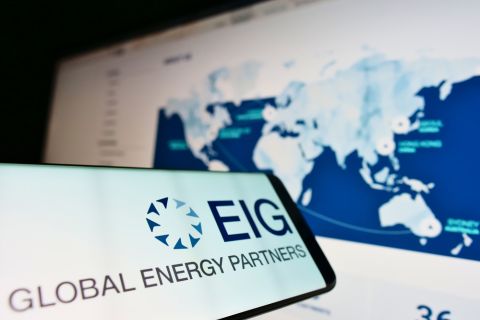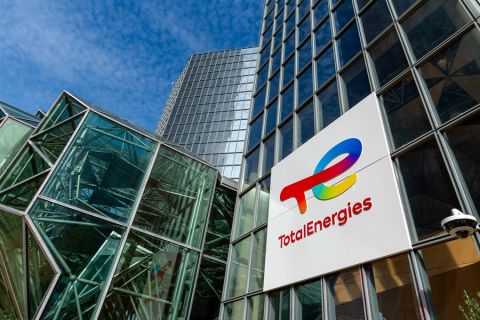As the world struggles to address increasing demand and decreasing supply of energy, producers are compelled to explore and produce in more challenging places. Technology has always been a key to success in this game. New seismic technology aims at imaging the blind spots of conventional methods. One such new technology is ocean bottom station (OBS) nodes.
 |
|
| Figure 1. Poor illumination of sparsely spaced OBS. Note the gaps for shallow reflections in terms of ray coverage. This problem is exaggerated if any OBS nodes fail (faint "R"). (All images courtesy of Veritas DGC) |
OBS nodes are deployed on the seabed and record data with both hydrophones and geophones. Conventional streamers are towed behind seismic vessels and record data with hydrophones only. Streamers serve us well but have limitations. In the presence of complex overburdens such as salt, reservoirs often lie in blind spots for conventional streamers. Salt bodies act like huge, thick lenses distorting seismic waves propagating through them. To image subsalt targets we must have the data processing capability to image through complex overburdens, but this is not enough. We also have to illuminate the targets. If the targets are not illuminated, even the best data processing people with the best methods and software cannot image them.
In the last decade we have made great progress in data processing for imaging subsalt targets, but progress in data acquisition has been less forthcoming. We now have a much better capability to build complex velocity models and image subsalt targets, but until recently our ability to illuminate these targets has fallen behind.
Wide-azimuth and OBS nodes
Why would OBS provide better seismic data? The main reason is that with OBS we can acquire data with a wide range of azimuths. Conventional streamer surveys are done with a single seismic vessel. Both sources and receivers are deployed on one boat, and the azimuths of all source-receiver lines are limited to a narrow range. Usually there is nothing wrong with such narrow azimuthal coverage, but if either the source or the receiver is located above an overburden anomaly, the illumination of some targets is likely to be poor. Wide-azimuth geometry is much better because if we don’t illuminate a target with one azimuth, we still have a good chance to illuminate it with other azimuths.
 |
|
| Figure 2. Imaging the sea surface multiple is equivalent to imaging primaries recorded on a surface as high as the sea is deep. |
OBS nodes are not the only way to acquire wide-azimuth data offshore. We can also acquire wide-azimuth data with towed streamers using two or more vessels. Such wide-azimuth towed streamers are more cost-effective than OBS for large areas. For small areas, however, OBS are more cost-effective. Moreover, OBS record both pressure (P) waves and shear (S) waves, while streamers record only P waves. Shear waves provide additional information, but they are not transmitted in water — they must be recorded on the seabed. For seismic monitoring purposes, the repeatability of OBS deployments is better than streamers because they are not subject to feathering. OBS also offer advantages in signal-to-noise ratios due to their quiet recording location on the seabed. Wide-azimuth data can also be acquired using ocean bottom cables (OBC), where sensors are embedded in cables rather than nodes. However, OBS provides better quality data than OBC. Last but not least, OBS can also be deployed under platforms in areas where towed streamer and OBC operations are limited by obstacles. All these factors may make OBS an effective tool for reservoir geophysics.
Sparse receivers and dense sources
 |
|
| Figure 3. Illumination of the up-going waves (a) is narrower than that of the down-going waves (b). In particular, the seabed cannot be imaged with up-going waves, but it can be imaged with down-going waves is decreased sensitivity to velocity anomalies and scattering just under the seabed. The receiver in (b) is further away from the seabed anomalies than the receiver in (a). A third factor is that the multiple down-going reflections (b) are traveling in effect closer to vertical than the primaries (a). |
Deployment and retrieval of OBS nodes in deep water is an expensive operation, requiring remotely operated vehicles. Therefore, the most practical OBS survey geometry involves sparse receivers and dense shooting. Such geometry provides excellent common receiver gathers suitable for wave-equation migration. However, the sparsely spaced receivers provide poor illumination, especially of reflectors whose depth under the seabed is less than the receiver spacing (Figure 1). If any OBS fails, the problem would be greatly exasperated.
Fortunately, there is a simple but effective solution for this problem. The data recorded by hydrophones and geophones on OBS can be combined to separate up-going from down-going waves. All primary reflections are contained in the up-going waves, and the down-going waves contain only multiples. Conventionally, only the up-going waves are imaged. However, we propose using the down-going waves and image with the multiples.
Mirror imaging
We can image the down-going waves as if they were recorded not on the seabed but on a surface as high as the sea is deep (Figure 2). This concept involves using the surface of the ocean as a mirror. Instead of looking down into the earth from the seabed, we look up into water and see the reflectors underneath, using the sea surface as a mirror.
Why would such mirror imaging be better than conventional imaging? As we can see in Figure 3, the waves reflected back from the mirror of the sea surface illuminate a wider area. We can even image the seabed.
Storegga data example
We applied this method to OBS data recorded offshore  Sediments in this region contain gas hydrates, an ice-like substance composed of methane trapped within a lattice of water molecules. Hydrates are stable in cold deepwater environments where conditions are favorable. At a certain depth under the seabed, primarily due to the increased geothermal temperature, the hydrates change from a solid ice phase to a gas phase. A bottom-simulating reflector caused by the resulting velocity contrast often marks the boundary between the two phases. Methane hydrates are important for predicting seabed stability and may also become a huge hydrocarbon reserve if and when production technology is developed.
Sediments in this region contain gas hydrates, an ice-like substance composed of methane trapped within a lattice of water molecules. Hydrates are stable in cold deepwater environments where conditions are favorable. At a certain depth under the seabed, primarily due to the increased geothermal temperature, the hydrates change from a solid ice phase to a gas phase. A bottom-simulating reflector caused by the resulting velocity contrast often marks the boundary between the two phases. Methane hydrates are important for predicting seabed stability and may also become a huge hydrocarbon reserve if and when production technology is developed.
 To study methane hydrates and other features of Storegga, previous studies used streamers to survey the northern headwall (Figure 5). This towed streamer data provided excellent regional coverage. The OBS data object of this study provides wide azimuth P and S data on the steepest part of the headwall (Figure 6). Shallow sediments containing gas hydrates were imaged using down-going waves, illustrating how a target less than 1,000 ft (300 m) under the seabed can be imaged with OBS deployed 1,300 ft (400 m) apart, even in the presence of node failure.
To study methane hydrates and other features of Storegga, previous studies used streamers to survey the northern headwall (Figure 5). This towed streamer data provided excellent regional coverage. The OBS data object of this study provides wide azimuth P and S data on the steepest part of the headwall (Figure 6). Shallow sediments containing gas hydrates were imaged using down-going waves, illustrating how a target less than 1,000 ft (300 m) under the seabed can be imaged with OBS deployed 1,300 ft (400 m) apart, even in the presence of node failure.
Summary
OBS technology represents one of the most promising tools to help us discover and produce more hydrocarbons. However, its high cost means that acquisition geometries will involve a small number of sparsely spaced receivers. Therefore, poor illumination is a problem.
Fortunately, there is an effective solution. We find that compared to the conventional images produced from primary up-going reflections, we can produce better images from the multiple down-going reflections using the sea surface as a “mirror.”
Recommended Reading
Ithaca Energy to Buy Eni's UK Assets in $938MM North Sea Deal
2024-04-23 - Eni, one of Italy's biggest energy companies, will transfer its U.K. business in exchange for 38.5% of Ithaca's share capital, while the existing Ithaca Energy shareholders will own the remaining 61.5% of the combined group.
EIG’s MidOcean Closes Purchase of 20% Stake in Peru LNG
2024-04-23 - MidOcean Energy’s deal for SK Earthon’s Peru LNG follows a March deal to purchase Tokyo Gas’ LNG interests in Australia.
TotalEnergies to Acquire Remaining 50% of SapuraOMV
2024-04-22 - TotalEnergies is acquiring the remaining 50% interest of upstream gas operator SapuraOMV, bringing the French company's tab to more than $1.4 billion.
TotalEnergies Cements Oman Partnership with Marsa LNG Project
2024-04-22 - Marsa LNG is expected to start production by first quarter 2028 with TotalEnergies holding 80% interest in the project and Oman National Oil Co. holding 20%.
Is Double Eagle IV the Most Coveted PE-backed Permian E&P Left?
2024-04-22 - Double Eagle IV is quietly adding leases and drilling new oil wells in core parts of the Midland Basin. After a historic run of corporate consolidation, is it the most attractive private equity-backed E&P still standing in the Permian Basin?




